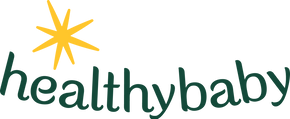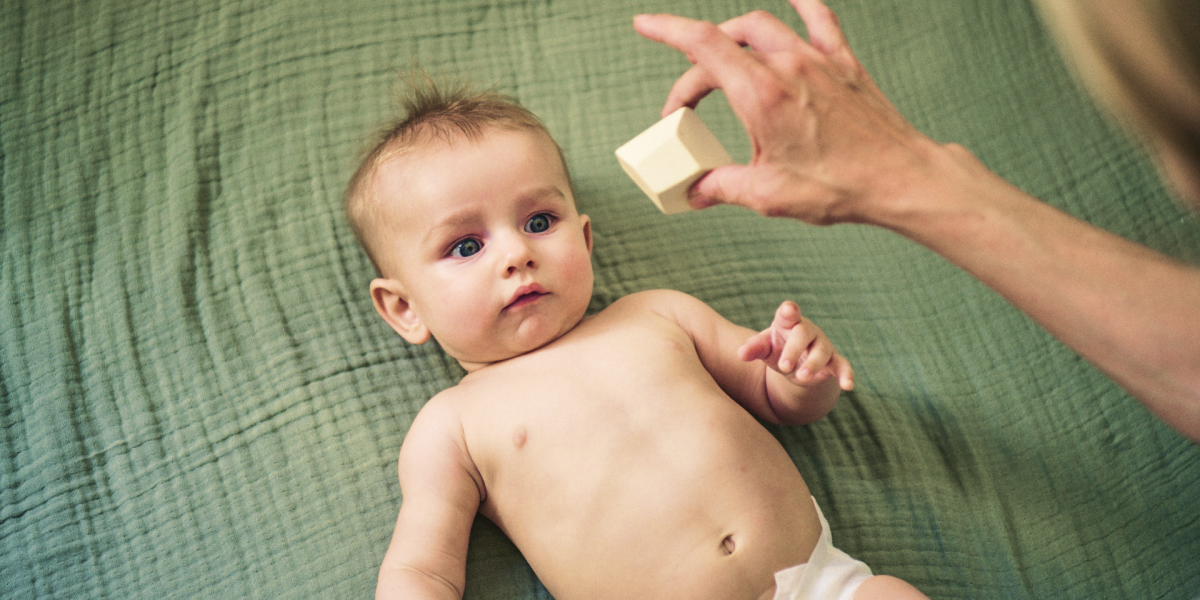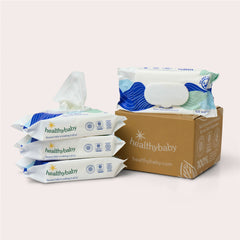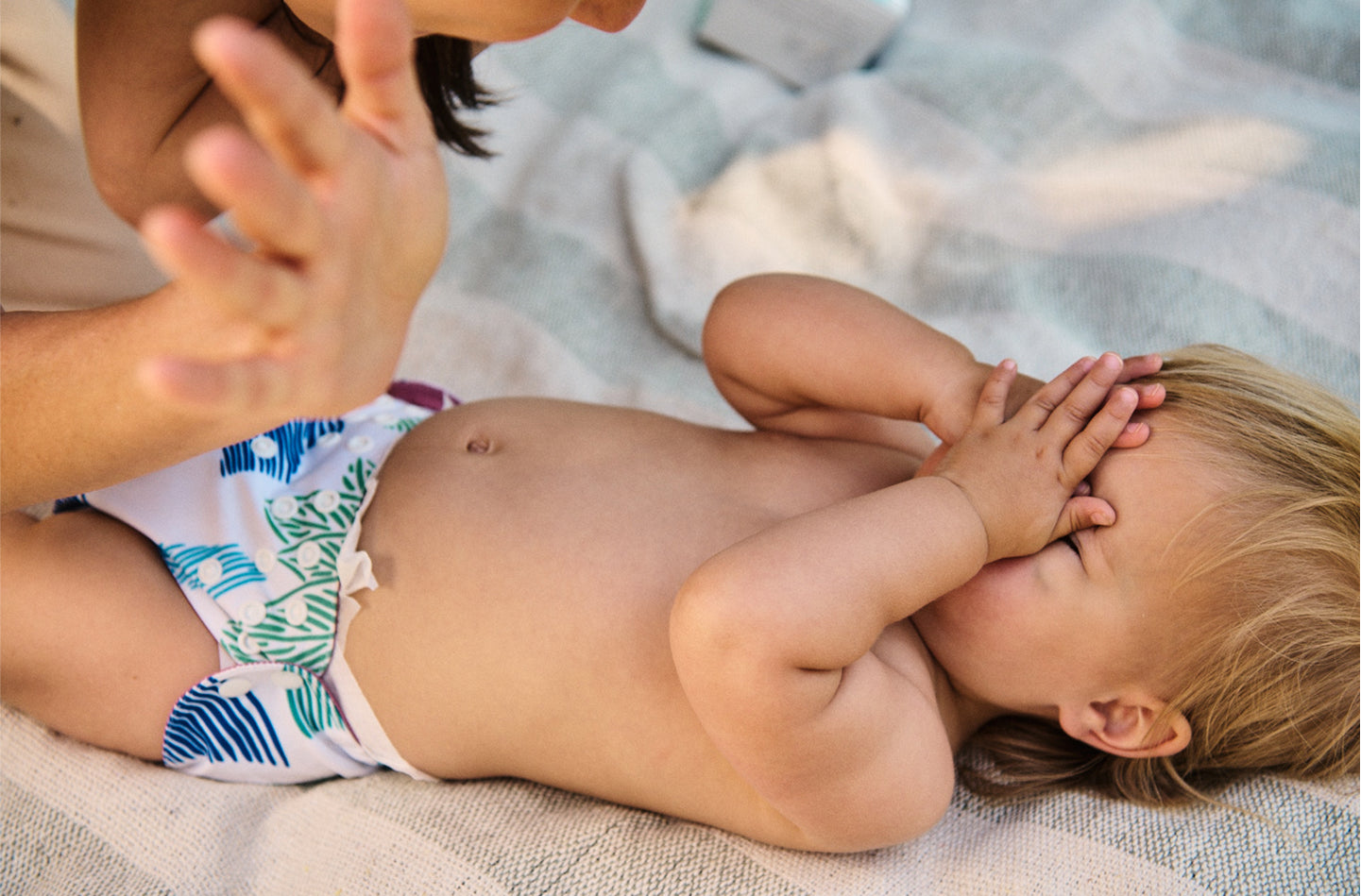Development isn’t a race. It’s a flow.
Every baby—and parent—is figuring it out at their own pace.
Instead of milestones, we encourage you to focus on this amazing moment.
Your baby’s brain makes more than one million neural connections per second in these first three years. Simple, consistent interactions with baby today can have profound, lifelong benefits.
Here’s how baby’s brain is developing this month, and how you can support their progress.
Developmental Highlight
Now that baby’s crawling, the world is literally at their fingertips. This new exploration is exhilarating, but sometimes baby looks up and realizes how far away they are from you, their secure base. And so begins the delicate dance of the freedom of independence and the security of connection: separation anxiety.
Before babies fully develop object permanence, they don’t realize that people and objects continue to exist even when they cannot see, hear, or touch them. As baby gets better at moving objects around, they start to develop object permanence. This gives them the ability to form and retain a mental representation of an object, person, or place.
While unpleasant, separation anxiety signals a major development in baby’s memory and visual-spatial awareness. Baby fusses when you leave them with another caregiver, because they know that their favorite person is out there somewhere. (Don’t worry, this will get easier for both of you soon.)
Brain-Building Activities
Peek-A-Boo
Routine: Diaper change, playtime, tummy time
One of the oldest games ever is one of the best ways to promote object permanence. Treat baby’s working memory like a muscle by working these playful moments in your daily routines.
- The old classic: Cover and uncover your face with your hands with a cheerful “Peek-a-boo!” Start slowly, as this will initially blow baby’s mind.
- Use a clean wet wipe or blanket to cover toys and then reveal them. Narrate the action as it happens. “Where did the ball go? The ball is gone. Oh, the ball is under the blanket! Here it is!” As baby advances, you can hide multiple items for them to find.
- Surprise baby by popping out from behind furniture or around the corner at home. Now you see Mama, now you don’t!
Healthy Goodbyes
Routine: Leaving
Separations and reunions are a normal and healthy part of life. One of the most practical and efficient ways to handle separation anxiety is to practice healthy goodbyes.
- Don’t sneak out to avoid a meltdown, as this can undermine baby’s trust in your relationship and make them anxious about you “disappearing.”
- As you leave, calmly smile, give baby a quick hug or kiss, and remind them that you’ll be back soon. We know this is hard, but trust us, it helps in the long run. If you’re distressed, baby will be, too.
- Baby’s reaction may seem fierce, but it usually passes quickly. The caregiver who stays with baby can redirect their attention to a favorite object or song.
You’ve Got This
Everyone talks about the importance of attachment, but it’s actually reattachment that helps baby master object permanence and feel safely and securely connected to you. Think of connection as a pulse. One beat, you and baby are together. The next beat, you and baby are apart.
While it can feel difficult to leave baby, please know that separation anxiety indicates that they are on their way to mastering a new level of cognition. You don’t have to feel guilty about taking some time for yourself. When you return to baby—ideally, rejuvenated and rested, because you deserve a break—you’ve strengthened that pulse of connection and baby’s understanding of object permanence. Even on just a short coffee run!










